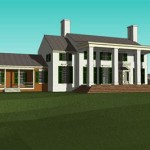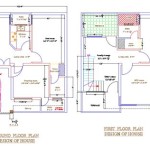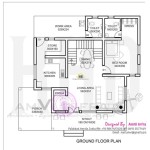Small Home Plans With Garage And Basement: Maximizing Space and Functionality
The demand for efficient and affordable housing continues to rise, leading to increased interest in small home plans that incorporate essential features such as a garage and a basement. These plans offer a practical solution for homeowners seeking to maximize space, add storage, and potentially create income-generating opportunities without the burden of a large mortgage or sprawling property. Carefully designed small home plans with a garage and basement can provide a comfortable and functional living environment while addressing needs for vehicle storage, recreational space, and potential future expansion.
The integration of a garage and basement into a small home design necessitates a strategic approach to space planning. Each component, including the living quarters, garage, and basement, must be meticulously designed to optimize usability and flow. This often involves thoughtful placement of stairs, efficient use of vertical space, and consideration of natural light sources. The design process requires a balance between aesthetic appeal, structural integrity, and functional requirements, ensuring the resulting home is both visually pleasing and practically efficient.
When considering a small home plan with a garage and basement, several factors must be taken into account. These include local zoning regulations, building codes, soil conditions, and the overall architectural style desired. Understanding these constraints and preferences upfront is crucial for creating a design that is feasible, compliant, and tailored to the homeowner's specific needs. Furthermore, careful consideration should be given to the energy efficiency of the home, incorporating features such as proper insulation, energy-efficient windows, and sustainable building materials.
Key Considerations for Designing Small Home Plans with Garage and Basement
Designing a small home plan that effectively incorporates a garage and basement involves careful planning and attention to detail. Several key areas require focused consideration to ensure a successful and functional outcome.
1. Space Optimization and Functional Layout:
The limited square footage of a small home demands that every space be utilized effectively. The layout should facilitate a seamless flow between different areas of the home, minimizing wasted space and maximizing functionality. This is especially crucial when incorporating a garage and a basement, which can potentially add significant usable square footage. The placement of stairs leading to the basement and the garage entrance should be carefully considered to minimize intrusion on living areas. Open floor plans can create a sense of spaciousness, while strategically placed walls can define distinct living areas. Consider multi-functional spaces, such as a living room that can double as a home office or a guest bedroom, to maximize the utility of each room. Vertical space should also be optimized, exploring options like built-in storage, loft areas, or higher ceilings to create a more open and airy feeling.
The basement can be designed for a variety of purposes, including a recreational area, a home theater, a workshop, or additional storage. Proper planning is essential to ensure that the basement is well-lit, ventilated, and accessible. Consider incorporating egress windows for safety and natural light. The layout of the garage should also be carefully planned to accommodate vehicles, storage, and potentially a workspace. Proper organization within the garage is essential to prevent clutter and maximize the available space. Shelving, cabinets, and overhead storage systems can help keep the garage organized and functional.
2. Structural Integrity and Building Codes:
The structural integrity of a small home with a garage and basement is paramount. The design must comply with local building codes and regulations, ensuring the safety and stability of the structure. A qualified structural engineer should be involved in the design process to ensure that the foundation, walls, and roof are adequately supported. The foundation must be designed to withstand soil conditions and prevent water intrusion. Proper drainage is essential to keep the basement dry and prevent structural damage. The garage should be designed to meet fire safety regulations, including fire-resistant walls and doors. The overall structural design must take into account the weight of the garage and basement, as well as the potential for snow and wind loads.
Building codes vary depending on location, so it is crucial to consult with local authorities to ensure compliance. The design should also comply with accessibility requirements, particularly if the home is intended for aging in place. Ramps, wider doorways, and accessible bathrooms can make the home more user-friendly for individuals with mobility limitations. The design should also consider energy efficiency standards, incorporating features such as proper insulation, energy-efficient windows, and a high-efficiency HVAC system. These features can help reduce energy consumption and lower utility bills.
3. Cost-Effective Design and Material Selection:
Budgetary constraints are often a primary consideration when designing a small home. Cost-effective design and material selection are essential to keep the project within budget without compromising quality or functionality. Simple, rectangular designs are typically more cost-effective to build than complex designs with multiple angles and curves. Standardized building materials can also help reduce costs. Explore affordable flooring options, such as laminate or vinyl, which can mimic the look of more expensive materials. Consider using recycled or reclaimed materials to reduce environmental impact and potentially save money.
Prioritize energy-efficient features, which can help reduce long-term operating costs. Invest in proper insulation, energy-efficient windows, and a high-efficiency HVAC system. Consider installing solar panels to generate electricity and reduce your reliance on the grid. Choose durable and low-maintenance materials to minimize the need for repairs and replacements. Proper planning and budgeting are essential to ensure that the project stays on track. Obtain multiple bids from contractors and suppliers to ensure that you are getting the best possible prices. Regularly monitor expenses and make adjustments as needed to stay within budget.
Benefits of Small Home Plans with Garage and Basement
Opting for a small home plan that incorporates a garage and basement offers several advantages, particularly for homeowners seeking affordability, functionality, and efficient use of space.
1. Enhanced Storage Capacity:
Small homes often lack adequate storage space, which can lead to clutter and disorganization. The addition of a basement and garage significantly increases storage capacity, providing ample room for storing seasonal items, tools, equipment, and other belongings. The garage can be used to store vehicles, bicycles, and outdoor equipment, while the basement can be used to store holiday decorations, family heirlooms, and other items that are not frequently needed. Proper organization within the storage areas is essential to maximize efficiency and prevent clutter. Shelving, cabinets, and storage bins can help keep items organized and easily accessible. Consider installing a workbench in the garage forDIY projects and repairs. The additional storage space can help keep the living areas of the home clutter-free and more functional.
2. Potential for Increased Property Value:
A home with a garage and finished basement generally has a higher market value than a similar-sized home without these features. The added functionality and living space provided by the garage and basement make the home more appealing to potential buyers. A finished basement can be converted into an additional living room, bedroom, or office, increasing the overall livable square footage of the home. A garage provides secure parking and storage space for vehicles, which is a valuable asset in many areas. The potential for increased property value makes a small home with a garage and basement a wise investment.
3. Versatile Living Space and Future Expansion:
The basement can be transformed into a variety of functional spaces, depending on the homeowner's needs and preferences. It can be used as a recreational area, a home theater, a workshop, a home office, or an additional bedroom. The garage can also be used as a workspace or a hobby area. The flexibility of the basement and garage allows homeowners to customize the space to meet their specific needs. Furthermore, the basement provides potential for future expansion. As the homeowner's needs change, the basement can be renovated to create additional living space. This flexibility makes a small home with a garage and basement a versatile and adaptable living environment.
Challenges of Small Home Plans with Garage and Basement
While small home plans with garage and basement offer numerous benefits, they also present certain challenges that must be addressed during the design and construction process.
1. Limited Space and Design Constraints:
The limited square footage of a small home can impose design constraints, requiring careful planning and prioritization. Maximizing usable space requires efficient layouts, strategic use of vertical space, and multi-functional design solutions. Integrating a garage and basement into a small footprint necessitates meticulous attention to detail, ensuring that each component complements the overall design without compromising functionality or aesthetics. The placement of stairs, access points, and structural elements must be carefully considered to minimize intrusion on living areas. Overcoming these space limitations requires innovative design solutions and a keen understanding of spatial relationships.
2. Foundation Costs and Site Conditions:
Building a basement involves significant excavation and foundation work, which can add to the overall cost of the project. Site conditions, such as soil type, water table levels, and slope, can further impact foundation costs. Difficult soil conditions may require additional reinforcement or stabilization measures, increasing expenses. High water tables may necessitate the installation of a sump pump or drainage system to prevent water intrusion. Sloping sites may require additional excavation or retaining walls to create a level foundation. Thorough site assessment and geotechnical investigations are essential to identify potential challenges and develop cost-effective solutions. Careful planning and budgeting are crucial to manage foundation costs effectively.
3. Ventilation and Natural Light:
Basements are often prone to moisture buildup and lack natural light, which can create an unpleasant living environment. Proper ventilation is essential to prevent moisture accumulation and maintain air quality. Egress windows can provide natural light and ventilation, as well as a means of escape in case of emergency. Dehumidifiers can help control moisture levels in the basement. The use of light-colored paint and reflective surfaces can help maximize the available light. Careful planning and attention to detail are essential to create a bright and comfortable basement environment.

Small Cottage Plan With Walkout Basement Floor

Small House Floor Plans With Basement

Drive Under House Plans With Basement Garage The Designers

Drive Under House Plans With Basement Garage The Designers

1500 Sq Ft Home Plans Rtm And Onsite In 2024 Basement House Small Best

27 Adorable Free Tiny House Floor Plans Craft Mart

Small Cottage Plan With Walkout Basement Floor

Cottage Plans And Cabin With Finished Basement Floor

10 Small House Plans With Open Floor Blog Homeplans Com

Tiny House Plans That Are Big On Style Houseplans Blog Com








